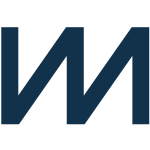About Atlassian
Millions of users globally rely on Atlassian products every day for improving software development, project management, collaboration, and code quality. Atlassian products include: JIRA Software, JIRA Service Desk, JIRA Core, StatusPage, Confluence, HipChat, Bitbucket, SourceTree, Bamboo, Cover, FishEye, Crucible.
About ChartMogul
ChartMogul can turn new and existing business intelligence data into valuable analytics that companies can use to improve their market performance. ChartMogul can take subscriber data - both created within ChartMogul and imported from other data sources - and generate visualized analytics for a variety of metrics that SaaS companies care about.
Popular Use Cases
Bring all your Atlassian data to Amazon Redshift
Load your Atlassian data to Google BigQuery
ETL all your Atlassian data to Snowflake
Move your Atlassian data to MySQL
Bring all your ChartMogul data to Amazon Redshift
Load your ChartMogul data to Google BigQuery
ETL all your ChartMogul data to Snowflake
Move your ChartMogul data to MySQL
Atlassian's End Points
Atlassian Info
Request information about your service desk instance, including its version number, how long the instance has been running and what build it is. Accessing this data will, among other things, allow you to more successfully integrate your service desk with other relevant data sources.
Atlassian Customers
Create a customer entity in JIRA Service Desk by providing Atlassian with the customer’s name, email and display name. Then, use this data in other endpoints to track service requests for a specific customer or integrate it with customer service data from other sources to provide a more comprehensive view of a customer’s journey.
Atlassian Organizations
Retrieve data on organizations that are engaging with your service desk, including the organizations’ names, IDs, properties and associated users. Then, access this endpoint to track those organizations, their users and their service requests so that you can have a better understanding of your service interactions with them.
Atlassian Requests
Track any and all customer service requests and get relevant data, such as the customer’s contact info, the reason for the request, and the status of the request (what step it is on in your customer service process). Use this data to evaluate how well your company is responding to these requests and/or monitor customer service trends.
ChartMogul's End Points
ChartMogul Plans
Gather data about your subscription plans - like the subscription IDs, names, billing intervals, and the number of intervals that are charged at once - to evaluate the performance of each plan. This will help you better understand the effectiveness of your plans so that you can determine which ones are more or less successful as a whole.
ChartMogul Customers
Create, retrieve, or update data for new or imported customers in ChartMogul. This allows you to see important customer contact details, customer IDs, and valuable performance data including a customer’s MRR, ARR, and industry sector. You can then use that data to better segment your customers, which can provide more accurate and specific information about your business performance.
ChartMogul Invoices
Import invoice data for customers that you are tracking through ChartMogul, including customer IDs, dates of purchase, transactions, and any relevant line items. Then, use ChartMogul to create subscription data for those customers and use that data to track more specific revenue data, both in ChartMogul and in your other data sources.
ChartMogul Transactions
Track payments or refunds made on an invoice to see the transaction ID, type of transaction, transaction date, and whether or not the transaction was successful. This can help you get more accurate analytics from your invoice data. It can also indicate when there is an unusually high number of refunds, which could signal a problem worth addressing.
ChartMogul Subscriptions
Get a list of subscriptions that ChartMogul has automatically generated from invoice data. This endpoint returns several IDs - including subscription IDs, customer IDs, plan IDs, and data source IDs - that will help you to more easily track and integrate data between any of those parameters to create deeper, more accurate business analytics.
ChartMogul Tags
Use tags to track terms that are associated with a customer so that you can segment or monitor them more specifically. For example, you could tag a particular customer as “high priority,” “returning” or anything else that is relevant to your business, and then retrieve a list of customers who have been tagged with those attributes in order to analyze them as a segment.
ChartMogul Custom Attributes
Update customer data with ChartMogul custom attributes that are more specific to the needs of your company. This can include both tags as well as more complex custom attributes. Then, track those attributes in ChartMogul to get analytics that are focused on your particular business concerns.








